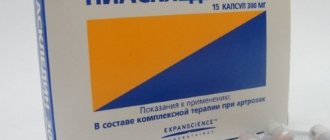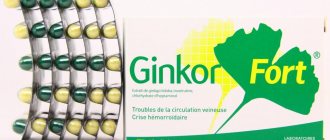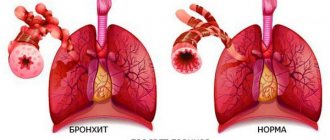Very often, diseases of the genitourinary system occur against the background of cardiovascular pathologies. In these cases, doctors try to select drugs whose interactions will not negatively affect the quality of treatment. One of these universal medicines is Cardura. According to patient reviews, this is an effective drug that generally copes with all the tasks. Why and to whom is it prescribed, does this drug have side effects? You will get the answer to these and many other questions by reading the article.
Description of the drug, its general characteristics
"Cardura" is a representative of the group of alpha-blockers that produce a hypotensive effect. These drugs are primarily used to treat blood pressure. Over time, researchers came to the conclusion that the active ingredients of this drug help relieve symptoms that occur in patients with prostate hyperplasia. This disease is also known under another name - prostate adenoma, but in medical practice it is the first option that is most often used.
Judging by the reviews, Kardura really has a positive effect on the patient’s body due to its antihypertensive properties. The medicine is available in tablet form. The cost of the drug depends on the dosage of the active substance (doxazosin) in each pill and the number of tablets in the package. On average, the price of “Kardura” varies between 500-750 rubles. The drug is released only by prescription.
Mechanism of action
The reason for the popularity of the use of Cardura in medical practice can only be explained by the pharmacokinetic properties of the main active ingredient. Doxazosin is an alpha-blocker that, penetrating into the bloodstream, works in several directions at once and has a systemic and local effect.
First of all, the active substance helps reduce blood cholesterol levels, improves insulin sensitivity and inhibits platelet aggregation properties. Thanks to the systemic use of Cardura, according to doctors, it is possible to increase the renin activity of plasma, which allows minimizing the risks of developing coronary heart disease and myocardial infarction. In addition, the course of administration gives good results in the treatment of left ventricular tissue hypertrophy by normalizing precardiac and vascular resistance.
In relation to the genitourinary system, doxazosin acts in a complex manner, blocking alpha-adrenergic receptors present in the pelvic organs and vessels, and improving overall urodynamics. "Cardura" does not affect the course of metabolic processes, therefore it is often prescribed to elderly patients. It, unlike a number of alpha-blockers, can be taken even for diabetes and gout.
According to reviews, Kardura is not addictive even with prolonged use. The active substance is absorbed from the intestine quite quickly, so the maximum concentration of doxazosin is observed in the blood two hours after administration. It binds to plasma proteins by more than 95%, which guarantees a long-term therapeutic effect from the use of the drug - at least six hours. Decomposition products leave the body naturally after approximately 22 hours.
Pharmacological properties of the drug Cardura
Doxazosin (1-(4-amino-6,7-dimethoxy-2-quinazoline)-4-(1,4-benzodioxan-2-ylcarbonyl)piperazine monomethanesulfonate) is a selective α1-adrenergic receptor blocker, an antihypertensive agent and a drug for the treatment of benign prostatic hyperplasia (BPH). AH (arterial hypertension) Doxazosin dilates blood vessels due to selective competitive blockade of postsynaptic α1-adrenergic receptors of blood vessels. The use of doxazosin in patients with hypertension (arterial hypertension) leads to a clinically significant decrease in blood pressure due to a decrease in peripheral vascular resistance. When using the drug once a day, a clinically significant hypotensive effect persists for 24 hours. Blood pressure decreases gradually: the maximum effect develops, as a rule, 2-6 hours after using the drug. In patients with hypertension (arterial hypertension) during treatment with doxazosin, blood pressure is the same in the supine and standing positions. In contrast to non-selective α1-adrenergic receptor blockers, long-term treatment with doxazosin does not develop tolerance to the drug. During therapy, increased plasma renin activity and tachycardia are rarely observed. Doxazosin has a positive effect on the blood lipid profile, significantly reduces the atherogenic index, the content of total TG and total cholesterol. Considering the established connection between hypertension (arterial hypertension) and lipid metabolism disorders and coronary heart disease, the beneficial effect of doxazosin on blood pressure and the level of atherogenic lipids simultaneously helps reduce the risk of developing coronary artery disease. Treatment with doxazosin leads to regression of left ventricular myocardial hypertrophy and inhibition of platelet aggregation. In addition, doxazosin increases the sensitivity of peripheral tissues to insulin in those patients in whom it is impaired. In controlled clinical studies in patients with hypertension (arterial hypertension), the use of doxazosin did not affect erectile function. In addition, patients who received doxazosin were less likely to complain of erectile dysfunction compared to patients who took other antihypertensive drugs. Doxazosin does not have a negative effect on metabolism; it can be used in patients with asthma, diabetes mellitus, gout, the elderly, and also in patients with heart failure. in vitro study revealed the antioxidant properties of 6'- and 7'-hydroxy metabolites of doxazosin at a concentration of 5 μmol. BPH Prescribing doxazosin to patients with symptoms of BPH helps to significantly improve urodynamics and reduce the severity of symptoms of the disease. The mechanism of action of the drug is due to the selective blockade of α1-adrenergic receptors, which are located in the stroma and capsule of the prostate gland and in the neck of the bladder. It has been established that doxazosin is a strong blocker of subtype IA α1-adrenergic receptors, which make up about 70% of all prostate receptor subtypes. This explains its effectiveness in patients with BPH. The effectiveness of maintenance treatment and the safety of doxazosin were established through long-term use of the drug (more than 48 months) in patients with BPH. After oral administration in therapeutic doses, doxazosin is well absorbed from the digestive tract; its concentration in the blood plasma reaches its maximum level after approximately 2 hours. Elimination from the blood plasma is biphasic, with a half-life of 22 hours, which allows the drug to be administered once a day. Doxazosin undergoes active biotransformation; less than 5% of the dose taken is excreted unchanged in the urine. In patients with renal failure, the pharmacokinetics of the drug do not differ significantly from that in patients with unchanged renal function. There is insufficient data regarding the use of the drug in patients with impaired liver function, so caution must be exercised when prescribing doxazosin to such patients. About 98% of doxazosin is bound to plasma proteins.
What's in the tablets
This drug is available in white, round, oval or diamond-shaped tablets. The pills have a break line in the middle, and on one side there is a number stamped indicating the amount of doxazosin in one tablet - 1, 2 or 4 mg of the active substance. In addition to it, the drug contains other substances:
- magnesium stearate;
- starch glycolate;
- sodium lauryl sulfate;
- microcrystalline cellulose;
- lactose.
Particular attention should be paid to the last substance in the composition, since lactose intolerance is very common in adult patients. In this case, the drug cannot be used.
Who is recommended to take Kardura?
The drug must be used strictly according to the instructions. The use of Kardura should be carried out according to the dosage and schedule established by the doctor. He must individually determine the course of treatment with this drug for the patient. Depending on the diagnosis, general health, age and other indicators, a treatment plan is drawn up.
It is necessary to take alpha-blockers, including the drug "Carduru", for such pathological conditions as:
- prostatic hyperplasia;
- disturbance of urine outflow;
- arterial hypertension.
Indications for use of the drug Cardura
AH (arterial hypertension) The drug is indicated for the treatment of patients with AH (arterial hypertension) as a first-line agent for blood pressure control. If monotherapy is ineffective, the drug can be prescribed in combination with other antihypertensive drugs (thiazide diuretics, β-adrenergic receptor blockers, calcium ion antagonists, ACE inhibitors). BPH The drug is prescribed to patients with delayed urinary outflow and in the presence of symptoms caused by BPH. Patients with BPH can be prescribed Cardura both for hypertension (arterial hypertension) and for normal blood pressure. When using the drug in patients with BPH and normal blood pressure, changes in the latter are insignificant. In patients with hypertension (arterial hypertension) and BPH, Cardura monotherapy may be effective.
Precautions and contraindications
Like any other medicine, this alpha-blocker has a number of limitations. All patients, without exception, who have a history of hypertension or prostate adenoma, should not take Cardura tablets. Doctors do not prescribe this drug in the following cases:
- development of anuria;
- low blood pressure and predisposition to orthostatic hypotension;
- chronic renal failure;
- infectious and inflammatory diseases of the urinary tract;
- glucose-galactose malabsorption;
- obstructive pathologies of the upper respiratory tract;
- sensitivity to lactose or other components of the drug;
- the presence of stones in the bladder.
For patients over 65 years of age, Cardura is prescribed in minimal doses for heart failure, previous stroke, liver dysfunction, mitral valve stenosis or right ventricular failure caused by exudative pericarditis or pulmonary embolism.
Cardura is not prescribed for children. This drug is also contraindicated for pregnant and nursing mothers, since the effect of doxazosin on the fetus, as well as its ability to pass into breast milk, have not been fully studied. However, as an exception, this drug is prescribed to a woman if the likelihood of improvement in her well-being is higher than the potential threat of harm to the child.
Cardura should be stored under the same conditions as most medications - in a dark place inaccessible to children at a temperature not exceeding 25 °C. The maximum shelf life is 5 years from the date of production. Expired tablets must be disposed of.
In what dosage should I take the drug?
As already noted, the treatment tactics are chosen by the attending physician. According to patient reviews, Cardura for prostate hyperplasia is first prescribed in a minimum test dose. By prescribing one tablet per day with a dosage of 1 mg, the doctor wants to make sure that the patient tolerates the drug normally without causing fainting or postural hypotension. If the test is satisfactory, the dosage of the drug is increased in accordance with the severity of the disease and the characteristics of the patient’s body. The maximum daily dose should not exceed 8 mg, and it is important to increase it gradually and not over one or two days.
For patients with hypertension, the optimal dose is considered to be 16 mg of doxazosin. In this case, treatment is carried out according to the above-described scheme, starting with 1 mg per day. After 10-14 days, the dosage is doubled. Take the tablets once a day after meals. If during therapy with alpha-blockers the patient is simultaneously taking diuretics or other antihypertensive drugs, the dose of Kardura should be adjusted. If the pills were stopped for any reason, but there is a need to resume treatment, they must be taken again from the minimum dose.
Use of the drug Cardura
Prescribed internally. The drug can be taken both in the morning and in the evening. It is advisable to take the first dose of the drug before bedtime to prevent the possible development of orthostatic hypotension. AH (arterial hypertension) Prescribed in a dose of 1 to 16 mg/day. It is recommended to begin treatment with a dose of 1 mg once a day for 1–2 weeks. Over the next 1–2 weeks, the dose can be increased to 2 mg once a day. If necessary, the daily dose is gradually increased to 4 at regular intervals; 8 and 16 mg depending on the severity of the hypotensive effect of the drug. Typically, the effective dose is 2–4 mg once daily. BPH The initial dose of Cardura is 1 mg once a day. Depending on the individual characteristics of urodynamics and the presence of symptoms of BPH, the dose can be increased at intervals of 1–2 weeks to 2 mg, then to 4 mg and then to the maximum recommended dose of 8 mg/day. Typically, the effective dose is 2–4 mg once daily.
Can it be taken together with other drugs?
Before taking Kardura in complex therapy, some features of this drug should be taken into account. First of all, doxazosin enhances the effect of diuretics and other antihypertensive drugs. At the same time, if non-steroidal anti-inflammatory drugs are used together with an alpha-blocker, the effect of the latter may be insufficient - reviews of Kardur confirm this.
The combination of this antihypertensive drug with drugs for the treatment of erectile dysfunction in men of the PDE-5 group is considered not entirely safe. As a result of the interaction of these two medications, patients often experience symptomatic hypotension and develop liver failure. At the same time, their simultaneous use is possible, but with a decrease in the dosage of one of the drugs. In accordance with the instructions for use, it is not advisable to combine Cardura with drugs based on epinephrine - the risk of developing tachycardia and lowering blood pressure increases.
There are no restrictions on simultaneous therapy with antibacterial agents, anticoagulants, beta-blockers or thiazide diuretics, since Cardura does not interact with such substances. During treatment with an alpha-blocker, you should absolutely not drink alcohol.
Interactions of the drug Cardura
Most (98%) of the drug binds to blood plasma proteins. in vitro study indicate that the drug does not affect the binding of digoxin, warfarin, phenytoin or indomethacin to human plasma proteins. In clinical practice, there are no signs of interaction of Cardura with thiazide diuretics, furosemide, β-adrenergic receptor blockers, NSAIDs, antibiotics, oral hypoglycemic agents, uricosurics and anticoagulants.
Adverse reactions
Most often there is a positive response to this drug, but one of the reasons for negative patient reviews of Kardura is the high risk of side effects. As a rule, this drug is tolerated by patients without any adverse reactions, but sometimes with prolonged use in men the following symptoms are observed:
- decreased levels of leukocytes and platelets in the blood;
- dizziness and tinnitus;
- blurred vision;
- muscle and joint pain;
- dyspeptic disorders (nausea, vomiting, diarrhea);
- stomach pain;
- dry mouth;
- flatulence and bloating;
- bile stagnation;
- development of drug-induced jaundice;
- headache, sleep disturbances;
- anxiety, tremor;
- shortness of breath, bronchospasm;
- frequent urination, hematuria;
- heartache;
- erectile disfunction;
- allergic reaction in the form of rash, hives, swelling.
The drug can cause drowsiness and inhibition of reactions, as evidenced by reviews and instructions. “Kandura” is not advisable to take if it is impossible to give up driving and operating machinery due to professional activities. You need to warn your doctor about this and ask to prescribe another drug - an analogue. Other side effects may include the development of anorexia, worsening or increased appetite, fatigue and swelling of the legs.
Side effects of the drug Cardura
When used in patients with hypertension (arterial hypertension) In controlled clinical studies during the treatment of hypertension (arterial hypertension), orthostatic reactions (rarely loss of consciousness) or nonspecific side effects, which are listed below, were most often observed. Body as a whole: asthenia, fatigue, malaise. Central nervous system and peripheral nervous system: dizziness, headache, drowsiness. Gastrointestinal tract: nausea. Respiratory system: rhinitis. Benign prostatic hyperplasia : According to controlled clinical trials, patients with BPH experienced the same adverse events as patients with hypertension (arterial hypertension). After the widespread introduction of the drug into practice, the following adverse events were reported: Autonomic nervous system: dry mouth, priapism. Body as a whole: allergic reactions, hot flashes, pain, weight gain. Cardiovascular system: hypotension, postural hypotension. Central nervous system and peripheral nervous system: hypoesthesia, paresthesia, tremor. Endocrine system: gynecomastia. Gastrointestinal tract: abdominal pain, constipation, diarrhea, dyspepsia, flatulence, vomiting. Hematopoiesis: leukopenia, thrombocytopenic purpura. Liver: changes in liver function tests, cholestasis, hepatitis, jaundice. Musculoskeletal system: arthralgia, muscle contractions, muscle weakness, myalgia. Mental disorders: agitation, anorexia, insomnia, increased excitability, anxiety, depression, impotence. Respiratory system: bronchospasm, cough, breathing problems, nosebleeds. Skin and its appendages: alopecia, itching, rash. Sense organs: visual disturbances, tinnitus. Genitourinary system: dysuria, hematuria, urinary disorders, frequent urination, nocturia, urinary incontinence. The following are other adverse reactions that occurred during post-registration studies of the drug in patients with hypertension (arterial hypertension) (such symptoms were also observed in the absence of treatment with Cardura): tachycardia, bradycardia, palpitations, chest pain, angina pectoris, myocardial infarction and cerebral disorders blood circulation
In case of overdose
Signs that a person has taken too much of the drug are most often a sharp drop in blood pressure and fainting. To help the patient, you need to put him on his back and raise his lower limbs. If severe symptoms of intoxication, cardiac and respiratory problems appear, you should urgently call an ambulance.
Drugs that have a similar effect
If for some reason it is impossible to take Cardura, the doctor replaces it with a structural analogue or a drug with a similar principle of action. Analogues of "Kardura" in composition are the following medicines:
- Doxazosin is a more affordable drug that is prescribed to patients with prostate adenoma as part of complex therapy. The drug contains an active substance of the same name, which relieves the symptoms of the disease, normalizes urination and reduces blood pressure. The effect of the medication can last up to two weeks. Doxazosin is available in the same dosage as Cardura - 1, 2 or 4 mg.
- "Kamiren" is a vasodilator that is used in male urology for the treatment of benign prostatic hyperplasia. Available in a similar dosage. The price per package averages 450-650 rubles.
- “Artezin” is an analogue of “Kardura” with the same active ingredient, but other excipients. It is used to treat the same diseases as Kardura. Available in pharmacies with a prescription, costs an average of 370-460 rubles.
- Magurol is an alpha-blocker that is more often used in the treatment of arterial hypertension rather than prostate diseases. It is considered an effective remedy for preventing the narrowing of the lumen of blood vessels, which is provoked by catecholamines. Thanks to Magurol, blood pressure decreases without the development of reflex tachycardia. In addition, this drug improves urodynamic parameters in patients with adenoma.
All Kardura analogues reduce the severity of symptoms, but are contraindicated for pregnant women and children. These drugs can be used for hypertension, heart failure and benign prostate hyperplasia. Thanks to taking drugs based on doxazosin, it is possible to achieve the expected therapeutic effect. These medications differ only in manufacturer and price at the pharmacy.
In addition to these analogues, other products presented on the Russian pharmacological market can be used instead of Kardura. Such products contain other active ingredients, but at the same time have a similar effect. It is worth noting several drugs that are often mentioned in reviews of Kardura. The instructions for use for them contain more detailed information, but for now let’s devote a few words to each of them:
- "Prazosin". The drug belongs to the group of alpha-blockers and has a hypotensive, antidysuric, and vasodilating effect. It is used in the treatment of the same diseases as Cardura, as well as in the treatment of such a rare disease as Raynaud's disease in the early stages. Prazosin is prescribed to children over 12 years of age. Judging by the reviews, the drug "Cardura" is found in pharmacies more often than "Prazosin".
- "Ebrantil" is an antihypertensive drug that affects the central and peripheral nervous system. The main active component is urapidil, which acts on the vasomotor center by blocking alpha-adrenergic receptors and reducing overall vascular resistance. It is allowed to be used by pregnant women with hypertension, refractory and complicated hypertension.
The need to change Kardura may be caused by severe side effects or intolerance to any of the components of the drug. To continue treatment with another drug that is similar in composition or principle of action, you should consult your doctor. Only a specialist will be able to correctly select a replacement and prescribe the correct dosage.
Special instructions for the use of Cardura
When prescribing antihypertensive therapy, the doctor should give the patient recommendations on measures to prevent and eliminate the symptoms of postural hypotension. The patient should be warned that dizziness and weakness may occur when starting doxazosin treatment. There is no experience of use in children. Caution should be exercised when prescribing the drug (as well as other drugs that are completely biotransformed in the liver) to patients with impaired liver function. The pharmacokinetics of Cardura in patients with renal failure does not change, and the use of the drug does not worsen the condition of renal failure, therefore, for the treatment of such patients it is prescribed in normal doses. Due to the lack of results from well-controlled clinical studies, the safety of Cardura during pregnancy and lactation has not been established, so the drug can be used only if the potential benefit outweighs the possible risk. It should also be taken into account that while taking the drug (especially at the beginning of treatment), the ability to drive vehicles and work with potentially dangerous mechanisms may decrease.
Doctors' opinion
Based on reviews of the drug "Kardura", we can conclude that this drug really helps in the treatment of the diseases for which it is prescribed. Experts put it on a par with the best antihypertensive drugs and drugs for the treatment of the prostate. Urologists can literally relieve inflammation and swelling, reduce the size of the prostate and normalize blood circulation in the pelvic organs in just a few days of use.
At the same time, none of the experts considers Cardura a completely safe drug. It must be used with extreme caution, since side effects occur to a greater or lesser extent in almost all patients. Many doctors claim that for prostate adenoma they try to prescribe safer drugs, but if they do not give the desired result, they prescribe Cardura. Doctors recommend that their patients take the medicine for the first time before going to bed, since it causes lightheadedness in many people. At the very least, it is not recommended to take pills while driving or performing technically complex work.
What patients say
Judging by the reviews, Kardura helps well with prostatitis. And yet, despite the fact that most comments are positive, there are also many in which patients express their dissatisfaction with the length of therapy. Some users praise the drug because it helped them get rid of their illness, while others complain about side effects, especially on the nervous and digestive systems. For some, the reaction to the medicine is so strong that it affects their well-being and performance.
Those who were treated for prostate hyperplasia with Cardura felt relief literally a week after treatment. The men's pain disappeared and urine flow returned to normal. It is also convenient for most patients that when taking pills, there is no need to follow the treatment schedule. You only need to drink Kardura once a day, so you won’t be able to forget to take your medicine on time.
The reason for negative reviews is often the high price of the drug. "Cardura" is 2-3 times more expensive than some alpha-blockers, and given that this drug must be taken for a long time, such treatment requires certain financial costs. According to most people, Cardura is a fast-acting and effective, but expensive medicine.
To avoid the adverse effects of taking Cardura, the patient must inform the attending physician about serious abnormalities such as liver dysfunction, renal failure and other problems. If there are contraindications, Cardura is replaced with another, safer drug in the appropriate dosage. The attending physician has the right in any situation to prescribe medications at his own discretion and adjust the treatment plan. Patients undergoing eye surgery should inform their eye surgeon that they are taking Cardura or have taken this medication in the recent past.









